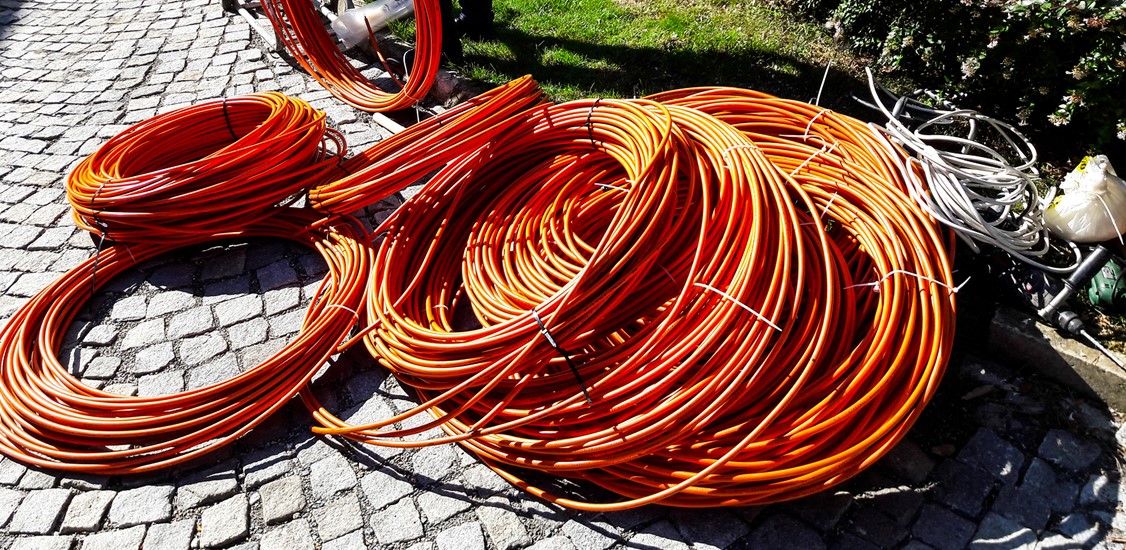With the digital divide still a pervasive problem, the UK has witnessed an upsurge in alternative broadband networks (altnets), that are rising to the challenge of filling the connectivity gap in under-connected areas across the country. According to uSwitch, there are still around 750,000 premises in the UK without a superfast, fibre broadband connection. Traditional providers have failed to provide high-speed services everywhere, and have been reluctant to invest in rural terrain - creating a gap in the market to connect the unconnected.
Through full-fibre networks offering superior speeds over traditional copper-based setups, altnets strive to plug this gap, improving inadequate broadband coverage in rural “not-spots”, while competing with the incumbents in densely-populated cities. Despite the gap in the market, altnets are struggling to compete with legacy household names. Some have been acquired, some have gone into administration. For the remainder to survive and then succeed in this competitive market, altnets need to invest in advanced technology that will enable their networks to stand the test of time.
Enter, Project Gigabit
A report from the Centre for Economics and Business Research (CEBR) and Virgin Media O2, estimated that improved rural connectivity could boost the UK economy by £65.1bn. In a bid to tap into this, the UK government launched Project Gigabit in April 2022 - a £5 billion broadband plan to deliver next-generation gigabit broadband to hard-to-reach households and businesses across the country. Recently, CityFibre, one of the UK’s most prominent altnets, was awarded £318 million of the Project Gigabit investment to support fibre rollout - demonstrating the government's support for alternative providers. This investment will help as CityFibre continues to invest in new network technology, such as XGS-PON, which is capable of delivering 10Gbps connectivity into homes and businesses. It will also continue to increase competition in the UK and put pressure on legacy broadband providers, such as BT and Virgin Media O2 (VMO2), to up their investments in rural areas.
In the last year alone, altnets received £15 billion of funding from investors. This injection of public and private money has intensified market competition significantly - with over 100 altnets operating across the UK today. If we are truly going to see a changing of the guards in the UK broadband landscape - altnets must ensure they capitalise on this investment and live up to their promise.
Survival of the fittest
With the legacy providers putting their foot on the gas to maintain their position, the pressure is on for altnets to deliver return on investment (ROI) to their investors. To evidence this struggle: Broadway Partners, an altnet based in Wales and Scotland, was forced to bring in administrators, due to financial constraints that arose from soaring costs and interest rates. If key performance targets are not met, a similar fate could hit the numerous emerging altnets in the UK.
The initial measure of success for many of these altnets was ‘passing homes’ - meaning the ability to connect them with a broadband service (i.e., having a fibre connection going to the street/cabinet). However, many altnets, having now deployed fibre into an area, are struggling to attract paying customers. This can be attributed to a combination of factors; lack of brand awareness or brand trust, loyalty to legacy providers, and preference for incumbents who offer TV, phone line, and mobile services bundles, alongside broadband packages. Although altnets offer a competitive price point, this is not enough - legacy providers have since adjusted their pricing to make them more affordable, in addition to boosting investment in rural areas.
What next for altnets?
To survive in this competitive arena, altnets must now prioritise technological innovation that will future-proof their networks.
For example, XGS-PON is being deployed by many broadband providers today (including altnets, CityFibre and Wessex Internet). XGS-PON enables ultra-fast broadband of up to 10Gbps symmetrical upload and downloads into homes or businesses - preparing them for the next generation of high-bandwidth services. We are also now starting to see commercial trials of 25G-PON, offering even higher speeds and greater capacity.
Software-driven and intelligent networks will also enable greater efficiency and automation. A software-controlled network can empower altnets to deliver quicker and better optimised network buildouts, using multi-vendor technology. It will also provide a better customer experience, thanks to the ability to diagnose and resolve problems faster in the network.
To meet a range of business use cases, altnets should offer tailored connectivity solutions. This includes the ability to customise plans to suit specific enterprises’ size and scope, as well as the flexibility to provide affordable pricing packages and attractive content terms. In addition, altnets must offer scalable bandwidth and advanced network security features to meet the ever-growing and ever-changing needs of enterprises.
Lastly, altnets shouldn’t do it alone - building a network of industry partners is crucial. Collaborating with proficient technical experts, network infrastructure vendors, and project management professionals can boost their ability to compete technically against broadband giants. Beyond independence, such partnerships can optimise network operations to deliver reliable, high-performance broadband services to customers enduring investors' returns.
Despite altnets having received a vote of confidence from public and private investors, we are yet to see a pivotal shift in the balance of power in the UK broadband market. Through the use of advanced PON technology coupled with automated, intelligent networks, altnets can deliver networks that will keep up with ever-widening consumer and business needs. By offering bespoke solutions, altnets can attract enterprises and broaden their customer base. With more subscribers, the new kids on the block will continue to draw investment and pose a challenge to the legacy providers. It is a high mountain to climb, but the rise of altnets provides us hope that we can deliver equitable digital access for all.






















